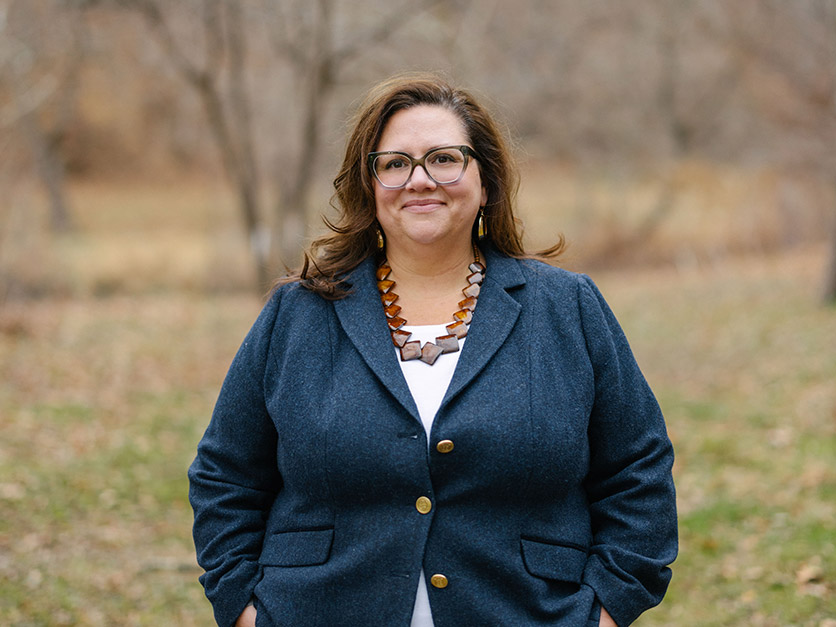Policymakers on the Agriculture Committees have been using this summer to gather nationwide feedback and testimonies such as the one I gave this week, about the Farm Bill, as they prepare to launch into discussions this fall around what the next iteration could look like.
When it comes to forestry, it's important to emphasize for our policy leaders that there is more the Farm Bill can do to support stewardship of private and family-owned forests.
Through the last four Farm Bills, Congress has made great progress in unlocking the potential in family forests to support both conservation and the economic needs of our country.
But we need to be honest about the realities of family forest ownership and the growing challenges of our nation, and in turn, approach our next Farm Bill with innovation to address this dynamic.
The family forest owner population is significant - 1 in 4 rural Americans owns forestland. Their lands account for the largest portion - nearly 40 percent - of forests in the U.S. And many family forests, nearly 75 million acres, are part of a farm operation. Family forests play an integral role in our rural economies, our country’s wood supply and our natural heritage. Even more, these lands have the potential to address two critical and intertwined challenges: the wildfire crisis and climate change.
Fortunately, family forest owners share a desire for their forests to be healthy and make a meaningful impact. Yet they are held back by a lack of forestry expertise and the high cost of management. Consider this - 85 percent of forest owners are not working with a forester nor have a management plan, and thus not maximizing the potential in our forests.
The Farm Bill has helped. The American Forest Foundation estimates that family forest owners are today accessing roughly $100 million from various Farm Bill programs.
While this is significant—the reality is, that’s less than 35 cents an acre if it were split across all family lands, an investment that does not adequately reflect the thousands of dollars of value per acre the public is benefiting from these forests.
Nor does it reflect the level of investment needed to address climate change, the wildfire crisis, or improve other natural benefits. Put simply, the Farm Bill has only just scratched the surface.
Increased funding and improvements to Farm Bill programs can help and Congress should pursue this, but we cannot rely solely on government funds for forest stewardship.
Rather, there is an opportunity to leverage the rapidly expanding voluntary carbon market, estimated to grow to a $90 billion market in the coming decades, to significantly expand support for America’s family forest owners and forest conservation.
To be clear, the government’s role in carbon markets should be minimal.
Today’s markets are driving forward independently with pockets of success. For example, at the American Forest Foundation, we have created a carbon program, with our partner The Nature Conservancy, that is a win-win for family forest owners, the economy, the forest products industry, and the climate. The Family Forest Carbon Program is active in Pennsylvania, West Virginia and Maryland, and the program just expanded into Vermont, Massachusetts and New York, helping landowners participate in the voluntary carbon market, by paying them to implement management practices that improve forest health and long-term productivity. In just a little over a year of implementation, we’ve already delivered more than $1.5 million in financial support for forest conservation to enrolled families.
Given that carbon markets’ outcomes align with the very same goals as those of the Farm Bill conservation programs, the Farm Bill should catalyze more of these projects in communities across rural America.
This is not a new concept. The U.S. Department of Agriculture has played a catalytic role in other agriculture markets before – because doing so was good for farmers and good for our country. Now as Congress looks to increase the pace and scale of conservation, they can use the Farm Bill to unlock the potential in carbon markets and dramatically increase meaningful stewardship.
What would this look like?
Because these carbon programs are new, and because they require upfront investment for landowners to implement forest practices that produce additional carbon over time - policymakers can include tools in the next Farm Bill for low-cost financing, such as is proposed in the bi-partisan Rural Forests Market Act to help these programs get off the ground.
Our legislators should also consider how Farm Bill programs can co-invest in carbon projects and leverage the private sector dollars as described in the SUSTAINS Act, introduced by Congressman Glenn Thompson (R-PA).
If we can’t overcome financing hurdles, this market opportunity will pass rural America by. Instead, we’ll see investments in wind, solar and other technologies, with little benefit for America’s hardworking family forest owners.
If we want the Farm Bill to truly support forest owners, forest conservation and our economic needs, we need to leverage the momentum of the private sector. Doing so will help us reach the outsized goals we all have for our forests.
Rita Hite is president and CEO of the American Forest Foundation. In her more than 20-year career in forest conservation, Rita has staffed congressional leaders on the House Committee on Agriculture.
For more ag news and opinions, visit www.Agri-Pulse.com.


